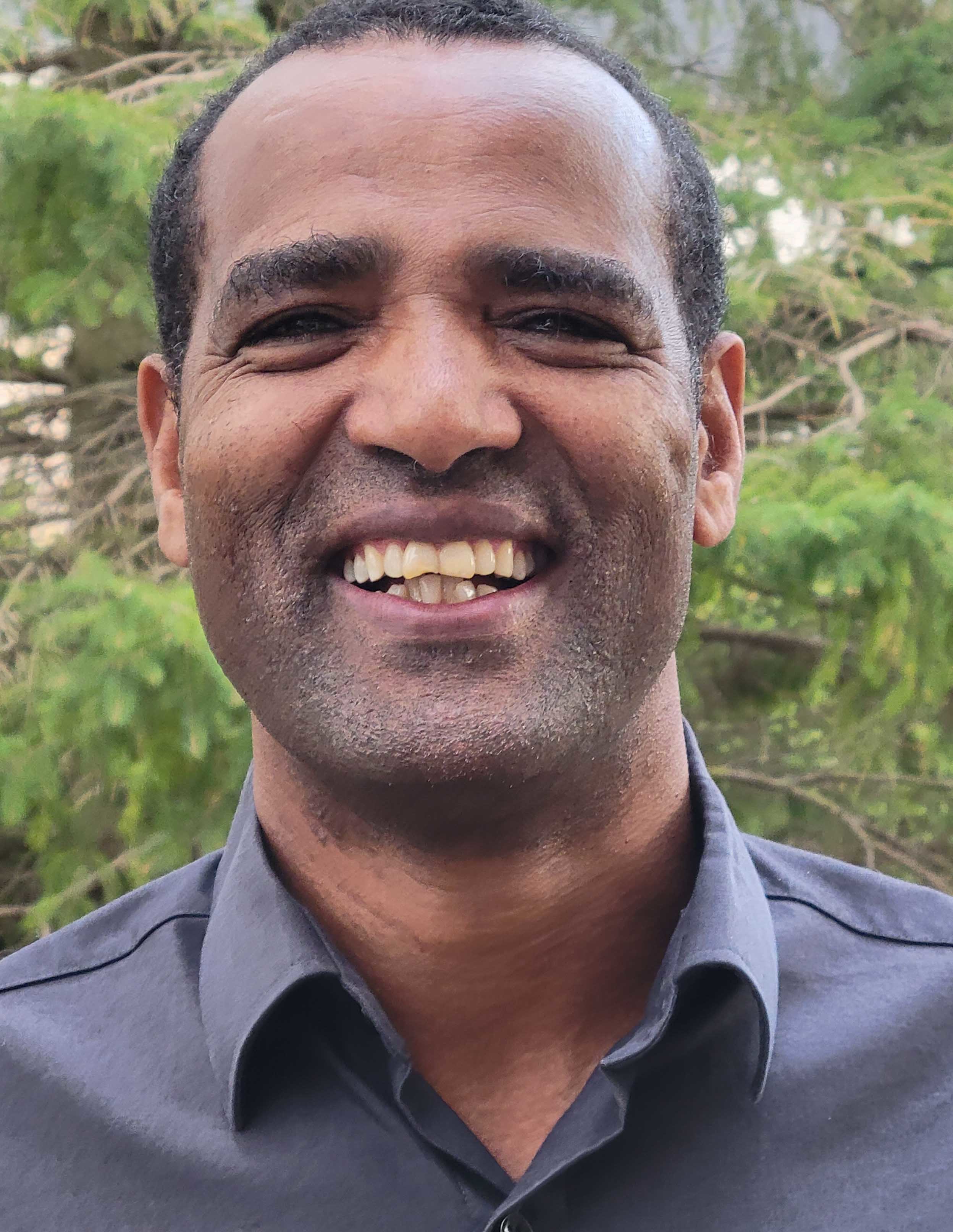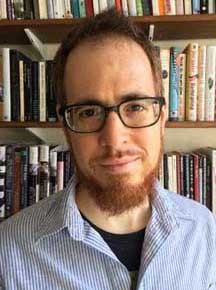Intercultural church - planting a transformational seed
Our Intercultural Church Steering Committee is guiding our nationwide and regional churches on the road to becoming an intercultural church.
Planting a transformational seed - Intercultural Church Steering Committee provides guidance on the road to intercultural church
Each of these members, who actively participate in Mennonite Church congregations across Canada, have committed to providing leadership to the nationwide and regional churches as Mennonite Church Canada seeks to become an intercultural church. [Note: the article linked below is from the launch of ICSC in 2021. Not all members pictured and mentioned are still part of ICSC.]
Fanosie Legesse, Intercultural Mission Minister, Mennonite Church Eastern Canada
 Home congregation: Zion Mennonite Church, Elmira, Ont.
Home congregation: Zion Mennonite Church, Elmira, Ont.
Tell us about your baptism: I was baptized in Ethiopia when I officially became a member of the Meserete Kristos Chruch (Ethiopian Mennonite Church). At that time the Church was under the intense persecutions of the Communist government of Ethiopia. Therefore, new members had to go through a long discipleship training before baptism. Baptism was explained to me as a public declaration of who I am in Christ and what I will continue to become as I follow him-dead to sin and risen to a continuous life of discipleship/following Jesus as I imitate Him in my daily living. Hence it was a truly sacred experience for me. I felt that Jesus was in me and all around me through the process while the pastor was burying me under water and raising me up as I was shouting the name of the Father, the Son and the Holy spirit.
What do you think Mennonite Church Canada can do to become an intercultural church? In my view, Mennonite Church Canada does not become an intercultural church overnight. The first step is to recognize that it is a long process. These are some of the important action items I think we can implement to expedite the process:
- Create awareness in and among congregations, especially those who don’t have enough exposure to people from different cultural backgrounds need to know that Mennonite Church Canada is becoming a home for many nations, languages and people of different socio-economic backgrounds.
- Facilitate events, workshops, one to one conversations that give diverse people groups opportunities to meet each other, to tell each others’ stories, to build meaningful relationships and envision sharing their God-given gifts to one another.
- Encourage and empower the hiring bodies of each of our five regional churches to diversify their human resources for the purpose of serving many nations.
- Lead by example as we dare to invite many nations into our fold, daring to love as we learn from our mistakes and correct them.
What is your hope for the work of this committee? I hope that this committee will pave a way to explore concrete corporate and individual steps towards becoming an intercultural body of Christ.
Joon Park, Abbotsford, BC
 Tell us about your baptism: I was baptized at a Korean Baptist church in 1986 when I finished my mandatory term in the army, spending three years. In the Korean evangelical context, baptism is regarded as a "natural or automatic" entrance to Christianity, once people spent a certain amount of time in the church. There was no rigid or strict "pre-baptism" education with repentance in public, except for an opportunity to share baptismal candidates' testimonies. I was enlightened to know what it means to be baptized in the Mennonite church.
Tell us about your baptism: I was baptized at a Korean Baptist church in 1986 when I finished my mandatory term in the army, spending three years. In the Korean evangelical context, baptism is regarded as a "natural or automatic" entrance to Christianity, once people spent a certain amount of time in the church. There was no rigid or strict "pre-baptism" education with repentance in public, except for an opportunity to share baptismal candidates' testimonies. I was enlightened to know what it means to be baptized in the Mennonite church.
What do you think Mennonite Church Canada can do to become an intercultural church? "When we are ready and eager for a new work of the spirit in which everything, including our lifestyles and corporate cultures, is turned upside down." (Quoted from what Charles E. Moore said in his book "Called to Community.")
What is your hope for the work of this committee? Becoming a transforming seed that, first, helps us have ownership of the Mennonite church (our voices are heard and responded.) And second, is used to bring a change to the current stagnant, monolithic, institutionalized church structure for the Revelation dream to come true.
Josh Wallace, Pastor and Instructor, Saskatchewan
 Please describe where you were baptized and why it was significant for you. I was baptized in the East Gallatin River just outside of Belgrade, Montana, in 1994. I was in grade five. The river bent through the pasture just behind the church. Cattle grazed on the opposite bank from where folks from Dry Creek Bible Church stood bearing witness, ready to celebrate. A year before I had been in a serious head-on collision, riding with a friend to go fishing after worship. Folks from church had driven the couple hours to be with my family when I was airlifted across the state. They sent cards, came and prayed over my body; the church librarian gave me books she knew my nine-year-old brain would like. But the wreck, more than just showing the practical love this congregation, confronted me with the love of God. My dad, a few weeks later, pushing my wheel chair on a walk to a bridge, said, “Josh, God saved you in that wreck, and if he saved, he saved you for a reason.” My childhood hopes and worries—making the basketball team, playing video games at a friends house--suddenly were set against the backdrop of God’s love for the whole world. And, it seemed, God wanted me to be part of it.
Please describe where you were baptized and why it was significant for you. I was baptized in the East Gallatin River just outside of Belgrade, Montana, in 1994. I was in grade five. The river bent through the pasture just behind the church. Cattle grazed on the opposite bank from where folks from Dry Creek Bible Church stood bearing witness, ready to celebrate. A year before I had been in a serious head-on collision, riding with a friend to go fishing after worship. Folks from church had driven the couple hours to be with my family when I was airlifted across the state. They sent cards, came and prayed over my body; the church librarian gave me books she knew my nine-year-old brain would like. But the wreck, more than just showing the practical love this congregation, confronted me with the love of God. My dad, a few weeks later, pushing my wheel chair on a walk to a bridge, said, “Josh, God saved you in that wreck, and if he saved, he saved you for a reason.” My childhood hopes and worries—making the basketball team, playing video games at a friends house--suddenly were set against the backdrop of God’s love for the whole world. And, it seemed, God wanted me to be part of it.
What do you think Mennonite Church Canada can do to become an intercultural church? Mennonite Church Canada lives with two realities. On the one hand, we are already more culturally diverse than we often recognize. In Saskatchewan, the last decades have witnessed urban migration, rural towns becoming bedroom communities, and shifts in marriage patterns. The folks who show up for worship on a Sunday morning are a different crowd from those who made up the congregation fifty years ago, and they live in different sorts of communities. On the other hand, this evolution of what Mennonite identity means here on the prairie (and, likely, beyond) has been haphazard. It’s something that’s happened to our congregations, not something we did purposefully (though there certainly may be exceptions). Cultural shift in these congregations has been guided by economic growth, change, bust and recover, by national and local politics, by shifting habits of negotiating identity guided mostly by advertising campaigns, school curricula, and Internet chatter. Because of this, our growing diversity has managed to leave mostly undisturbed habits of white supremacy, suspicion/antipathy toward newer immigrants, feelings of proprietorship, settler colonial structures and policies, and more. Things are changing, and yet things also manage to stay the same.
To grow and thrive as intercultural congregations, we must begin to work into our congregational identities and to welcome the many ways we’re already made up of people from many places, many backgrounds, at home in communities and in families of folks from many places, backgrounds, languages, histories. We have to rework our sense of who “we” is. Becoming intercultural in a healthy way means laying down our identities to be reworked into fuller beloved community.
What is your hope for the work of this committee? The ICSC offers our family of congregations a pathway into the integral transformation God longs to see happen within our congregations for the sake of the healing and hope of all the world. The role of the ICSC is to help guide learning, conversations, experiences and new relationships that set the table for congregations' joyful discovery of a broader, fuller, strange-yet-beautiful identity. My hope is that we will all feast together!
Resources
CommonWord resources CommonWord
Video - Church, Discipleship, Differences and Kimchi with Pablo Kim demonstrating how making kimchi can help us reflect on becoming an intercultural church together.
Article - Toward Antioch by Doug Klassen and Joon Park. Where is God leading us as a nationwide community of faith, as regional churches and as local congregations?
Book - Relation without Relation: Intercultural Theology as Decolonizing Mission Practice by Hyuk Cho. Available for purchase from publisher